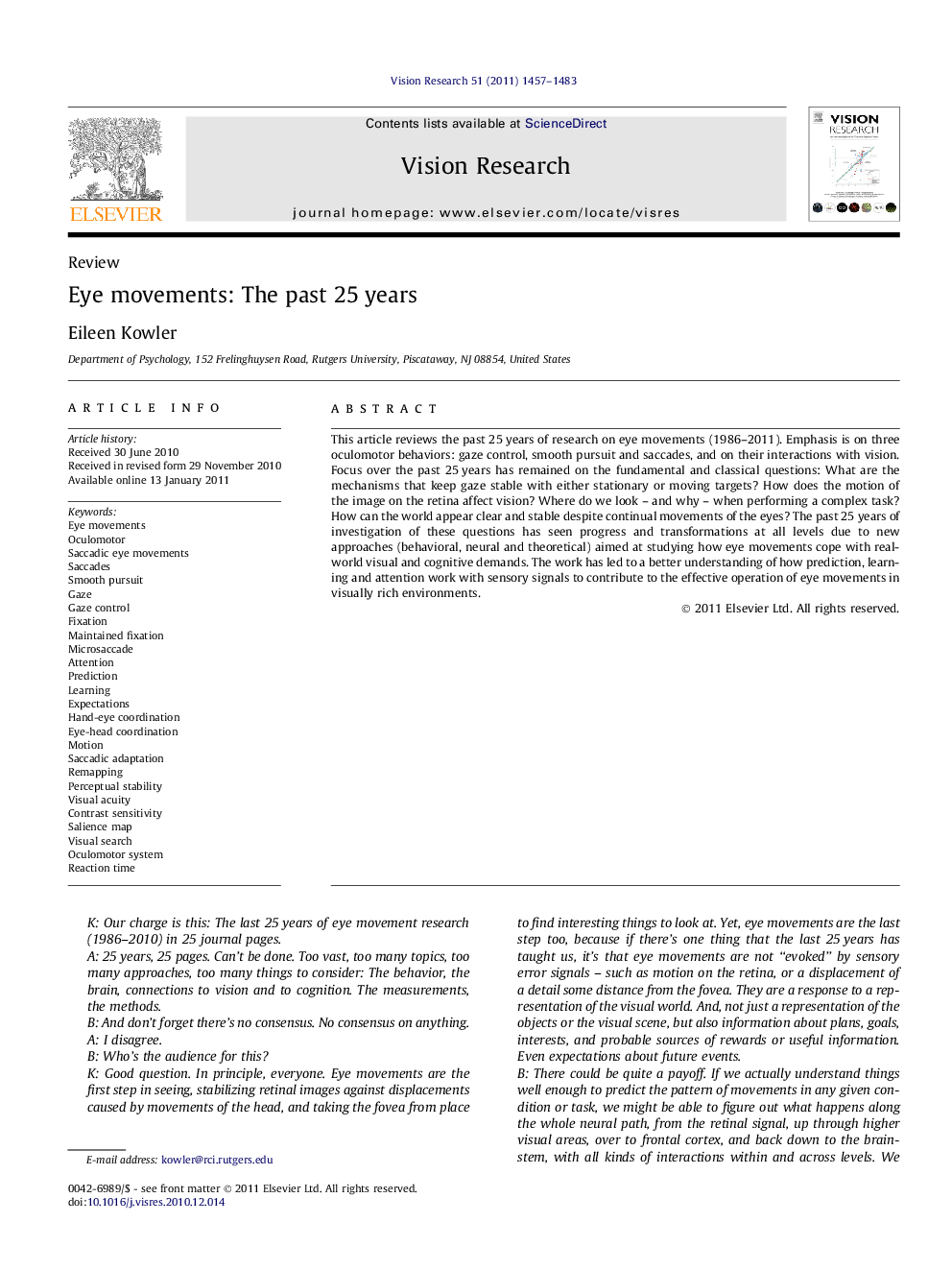| Article ID | Journal | Published Year | Pages | File Type |
|---|---|---|---|---|
| 6203759 | Vision Research | 2011 | 27 Pages |
This article reviews the past 25Â years of research on eye movements (1986-2011). Emphasis is on three oculomotor behaviors: gaze control, smooth pursuit and saccades, and on their interactions with vision. Focus over the past 25Â years has remained on the fundamental and classical questions: What are the mechanisms that keep gaze stable with either stationary or moving targets? How does the motion of the image on the retina affect vision? Where do we look - and why - when performing a complex task? How can the world appear clear and stable despite continual movements of the eyes? The past 25Â years of investigation of these questions has seen progress and transformations at all levels due to new approaches (behavioral, neural and theoretical) aimed at studying how eye movements cope with real-world visual and cognitive demands. The work has led to a better understanding of how prediction, learning and attention work with sensory signals to contribute to the effective operation of eye movements in visually rich environments.
Research highlights⺠The past 25 years has seen new approaches to eye movements and vision. ⺠Insights into the nature and role of image motion during fixation have emerged. ⺠The role of prediction, learning and attention during pursuit is better understood. ⺠Saccades during real-world tasks show a close integration between saccadic planning and the immediate demands of the task.
